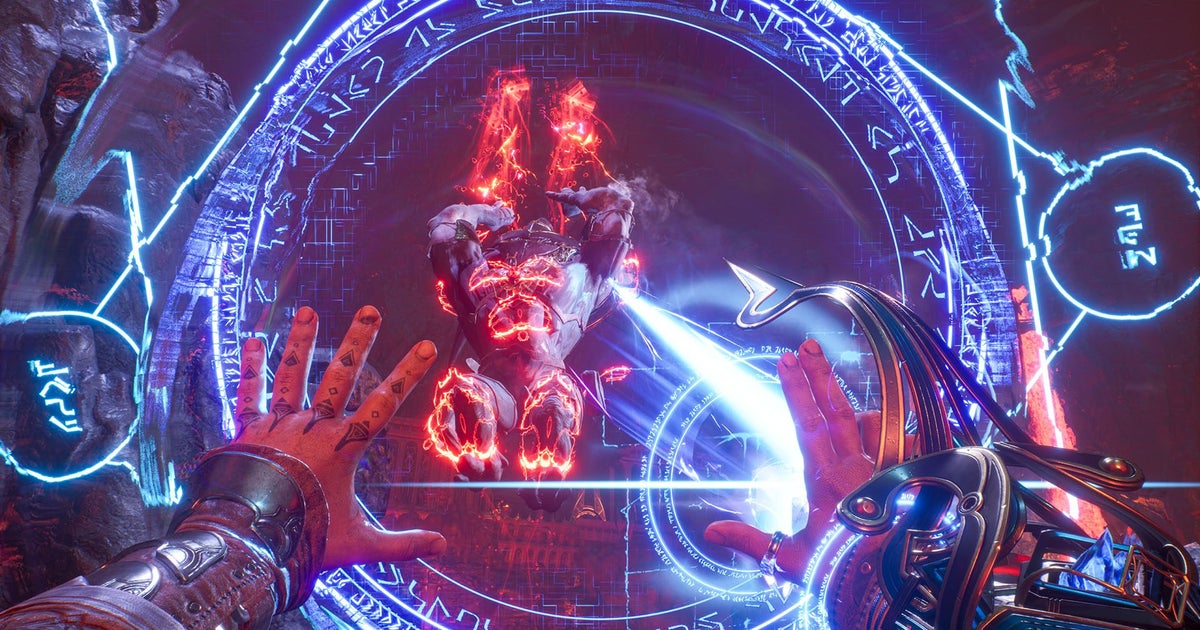
Inside Immortals of Aveum: the Digital Foundry tech interview
Ahead of the launch of Immortals of Aveum, Alex Battaglia and Tom Morgan spoke with Ascendent Studios' Mark Maratea, Ju…
From a technological perspective, Ascendant Studios' Immortals of Aveum is a highly important game. Excluding Fortnite, created by Epic Games itself, it's the first triple-A game to ship with all of Unreal Engine 5's cutting-edge features in place. That's the microgeometry-based Nanite, capable of astonishing levels of detail, along with Lumen - a ray tracing-based global illumination solution plus virtual shadow maps. Prior to Fortnite, The Matrix Awakens was the only console-based UE5 release we saw with those features - looking amazing but with obvious performance concerns.
Not only is Ascendant using all UE5 features, it's also aiming for 60fps on consoles. It's a highly ambitious game then, but as yesterday's DF review revealed, GPU compute can only go so far, so image quality necessarily has to take a hit, with FSR 2.2.1 used to upscale from a base 720p resolution Xbox Series X and PlayStation 5.
Going into the review process, we were highly motivated to find out more about what makes the game tick, so when EA offered us the opportunity to talk with the development team, we jumped at the chance. Alex Battaglia and Tom Morgan spoke with Ascendant Studios' Mark Maratea, Julia Lichtblau and Joe Hall - and here's that conversation.
Immortals of Aveum: the Digital Foundry console tech review. We'll have a look at the PC version soon.
How long has Immortals been in development- and was the idea always to produce something that is akin to a magic first-person shooter or did it evolve during the project?
Mark Maratea: The company was formed to make this game, and it took a significant portion of time to step up... then Covid hit, so the [time spent] staffing became a very interesting time period. This game is five years old, for all intents and purposes.
Julia Lichtblau: A couple months after Brett [Robbins] actually founded the studio, he handed Dave Bogan, the senior art director, and me this 60-page pitch document, which ostensibly was a magic shooter. It had the basic premise of [protagonist] Jack and this big story arc. Obviously, things did sort of change, like the intricacies of the combat, but he knew that Brett knew he wanted to make this magic shooter game because it was something that didn't exist before, and it was a game he really wanted to play and wanted to make.
Based on the timing, I'd imagine that the game didn't start on Unreal Engine 5 as it didn't exist - so did it start on Unreal Engine 4, and did it migrate to UE5? What was that like?
Mark Maratea: The project started using UE 4.20, which came out in July, and the company was formed in August [2018]. When the company first started, everything was done in blueprints with no engine code changes, as if it was a smaller indie project to prototype it out... This could have changed; the reality of the business decisions around this is that if someone stepped up as a publisher three months in and said, "you're coming, but you're using Frostbite or whatever", that would have [required] a pivot. We are lucky enough to have a very generous funding source... an amazing partner, so that's given us the autonomy to make these decisions. We started out with vanilla 4.20, vanilla 4.21, 4.23 custom engine, 4.25, 4.26, UE5 preview, UE5 actual, UE5.1, and now we are shipping as UE 5.1.1.
